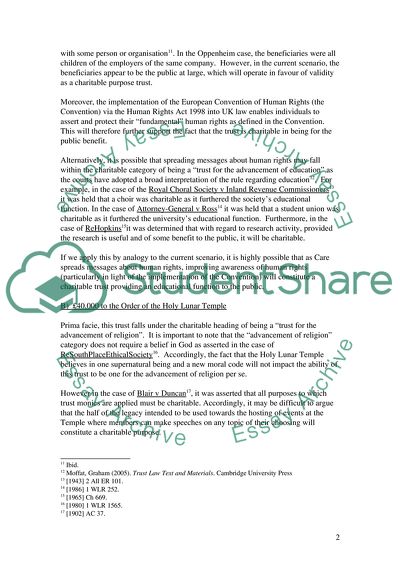Cite this document
(The Legal Definition of Charity Case Study Example | Topics and Well Written Essays - 1750 words, n.d.)
The Legal Definition of Charity Case Study Example | Topics and Well Written Essays - 1750 words. https://studentshare.org/law/1713757-lawllb-equity-and-trusts-charities
The Legal Definition of Charity Case Study Example | Topics and Well Written Essays - 1750 words. https://studentshare.org/law/1713757-lawllb-equity-and-trusts-charities
(The Legal Definition of Charity Case Study Example | Topics and Well Written Essays - 1750 Words)
The Legal Definition of Charity Case Study Example | Topics and Well Written Essays - 1750 Words. https://studentshare.org/law/1713757-lawllb-equity-and-trusts-charities.
The Legal Definition of Charity Case Study Example | Topics and Well Written Essays - 1750 Words. https://studentshare.org/law/1713757-lawllb-equity-and-trusts-charities.
“The Legal Definition of Charity Case Study Example | Topics and Well Written Essays - 1750 Words”. https://studentshare.org/law/1713757-lawllb-equity-and-trusts-charities.


